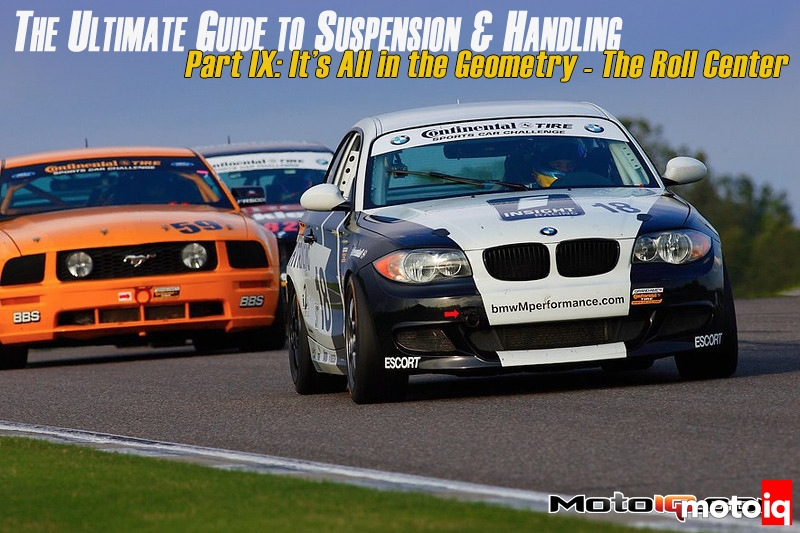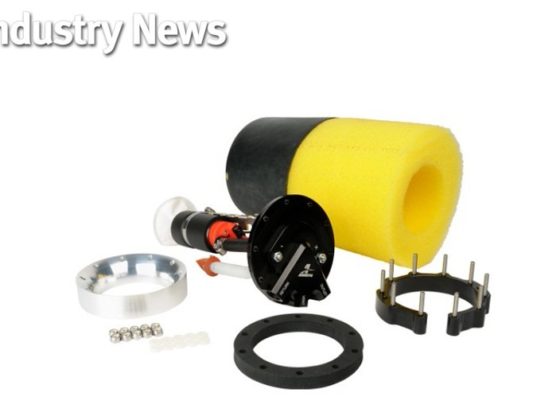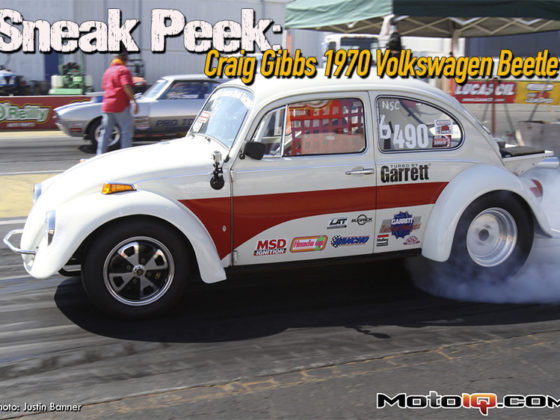,
 |
| Modern F1 cars are an interesting extreme contradiction in what should be correct geometry. They have an ultra high front roll center and a backwards sloping roll axis. The front suspension geometry and roll couple distribution are both totally sacrificed for aerodynamics. An F1 car probably pushes in super low speed turns, but then again I guess F1 cars hardly ever corner at super low speeds. |
The mass and roll center locations can be used to predict the car’s natural handling characteristics. If the front and rear roll centers are plotted and a line is drawn between them, that line will represent the roll axis of the car. The roll axis is the axis that the car rolls around in a turn. The mass axis of the car can be plotted roughly by drawing a line through the front and rear masses of the car used for plotting the roll centers.
 |
| Can you guess what the terminal handling characteristics of this Porsche with a heavy rear weight bias and a low rear roll moment is going to be? |
The mass axis will henceforth be called the Mike axis since I could not find a preexisting engineering term for it! When the roll axis and the Mike axis are plotted next to each other, the distance and slope between the two will give you what the car’s natural handling tendencies will be.
 |
| Ahhh, Sport Compact car called the roll axis the Mike Axis! |
If the space between the two lines is less in the front of the car, with an upward sloping Mike axis, the car will tend to understeer due to greater weight transfer to the outside wheels at the front of the car due to a greater amount of geometric anti roll. If the distance between the lines is greater at the front and less in the rear, the car will understeer less due to the greater amount of rear geometric anti roll giving more rear outside weight transfer.
Front engine RWD cars typicaly exhibit the latter trait can can oversteer a lot despite a front weight bias. Rear heavy rear and mid engine cars also exhibit this trait, partially due to a larger rear polar moment of inertia and a smaller rear than front roll couple. A front wheel drive car is typically so nose heavy that it is pretty hard to overcome the tenancy to understeer. It takes pretty high rear roll stiffness and a bit of geometric antiroll to get these cars to rotate with reasonable wheel rates.
 |
| I have shit named after me yo! |




25 comments
If i understood correctly, you want the roll centres close to the centres of gravity, but always below them? I looked at the rear axle multilink setup on my car and it looks like the roll centre, unloaded, is somewhere just above the boot floor. Im guessing the centre of gravity is somewhere there aswell. I have lowered the car about an inch at back because it got very light and skiddish under 0.8+ G braking, now i think the roll centre was going above the centre of gravity. Anyway, problem completely gone with lower and stiffer oem springs. No body roll in the car to speak off, so will not lower the front axle as the control arms are about horizontal already.
You don’t, necessarily want the roll centers close to the CG and certainly not above them because that would induce jacking. Also checking the roll center unloaded is not very useful, it should be checked at ride height.
Unloaded meant without load in the car, it was most certainly at ride height. The car is an alfa romeo giulietta, with a rear setup very close or even identical to a 2013 dodge dart. All the links on the body are higher than on the wheel side and just inches below the boot floor. I ordered the car with a dynamic chassis setup which had slightly stiffer and higher springs at the back. Cars with a heavy glass roof get the same springs to correct their ride height and attitude, but mine being lighter got very dynamic indeed. The front however seems very well sorted
That seems like a really bad design for a modern car, perhaps I am not understanding the layout.
Ok, I looked at the Dart rear suspension and the roll center probably isn’t that high. It looks to be about 8-10″ off the ground on the Dart or just under the midline of the wheel.
I ll try to work out the lines in detail from upper and lower mount, and from center of tyre contact next time its on a 4 post lift. Today i went around a roundabout a few times and between 1 and 1.05G lateral the rear right tyre starts squeeling. I can keep it there indefinitely and ESC doesnt quick in but i would have expected the squeel to start at the front. The rear tyres are new and the fronts are nearly worn so that will have an effect aswell. I will investigate the rear camber and toe settings next to see if i can raise the G limit some. Dont want to mess with it much as its very tolerant in changing direction right now. was thinking to modify the front lower control arms for a bit more track width and caster/camber but will leave it for now or just add a little caster as it would be easiest. Love to see your work here though Mike. Thanks for your time!
Great info Mr Mike!
Much appreciated!
Any suggestions improving the N15 handling for street purposes?
Read this!
https://motoiq.com/how-to-make-crappy-cars-handle-well/
How to find roll centre in anti-dive or anti-squat double wishbone suspension, where upper and lower arms are at angle (side view)? Thanks
The roll center isn’t anti-dive or anti-squat and isn’t related. I think you need to read the article because I am not sure you understand what it is.
Hi mike, could you suggest a way (if any) of raising the rear roll centre on a multi link rear suspension, the likes of that found on the mk5 golf?
There a lot of ways to do it but I suggest not trying to mess with this unless you really know what you are doing and even why you want to do it.
Amazing info and very concise and understandable, many many thanks. But, uh….typo? Second to last paragraph says: “If the space between the two lines is less in the front of the car, with an upward sloping Mike axis, the car will tend to understeer …….. If the distance between the lines is greater at the front and less in the rear, the car will understeer…” Should not the last example say “oversteer” and not say “understeer” again?
Roll moment depends on both distance og cg to roll center and distance of roll center to ground .If you lower roll center the distance of roll center feom cg increases whereas distance from ground increases.So will the roll moment increase or decrease?
The distance to the ground isn’t relevant.
I lowered a vehicle with McPherson strut by 35 mm does it mean that the roll centre is closer to the C.G now as it isn’t an extreme lowering?
yes
Thank you for the reply mike !
So if I reduced body roll of a vehicle using stiffer lowering springs, did the body roll decrease because of decrease in load or weight transfer in vehicle? Or is it just because of reduced roll centre to C.G distance?
Thanks in advance
Mostly because of the stiffer springs. It’s hard to say about the roll couple height without actually measuring whats going on.
“Mike axis” is called the Mass Centroid Axis. So no, not named after you. And not named after Adam Yauch, either.
But that is the name for any body. Mine is for cars!
Great article! The roll center conversation seems non existent in most tuner shops. It was not till I started racing my setup guy pointed this out. Years later I circled back to my lowered street car only to discover what a mess the previous owner made by over lowering it. Without making any other changes I lowered front ball joint 24mm (Mac strut) and raised rear subframe 10mm. I re-aligned to previous specs and WOW what a difference! Front end push was gone and the car just felt more confidence inspiring,
I have no doubt I was experiencing camber loss on the front before. The new wheel carriers fixed that. I am going to raise the car next to achieve ideal front lower control arm angle (still to low for that) then corner balance and tweak from there.
Thanks to those who write great articles like these, without em I’d have just another slammed poorly setup car.
First of all, thank you for passing your knowledge !
Do that whole article is about FWD cars ?
I am going back and forth between here and Suspension Secrets (SS) article and it leaves me confused.
While you explain that the rear roll center should always be higher than the front,SS article is about
having a lower RC at the driven axle . in that case,your article would support SS one,if it is only for FWD
cars.
Suspension Secrets article:
https://suspensionsecrets.co.uk/roll-centre-and-roll-moment/
No it’s not just for FWD, I just don’t agree with them.
As a novice, my intense focus on roll centers have always invited all sorts of counter arguments…”it doesn’t matter because you can add stiffer springs and stickier tires…or, “lowering the CofG is more important than anything.” I am glad to read articles like this as I have always believed that for none aero cars, RC location and migration is critical to great handling…and spring/damper selections.
As an aside, my MK7 GTi has a slightly wider track…15mm per side front and 10mm per side rear and is lowered 10mm all four corners. I get a little more turn-in understeer, with much better mid-corner grip. Track width was increased using spacers, ugh! I know, but incorporating TTRS knuckles etc is quite expensive. Scrub radius isn’t perfect…but also, SAI seems to fall in a better place…closer to the tire’s actual contact patch…thoughts?